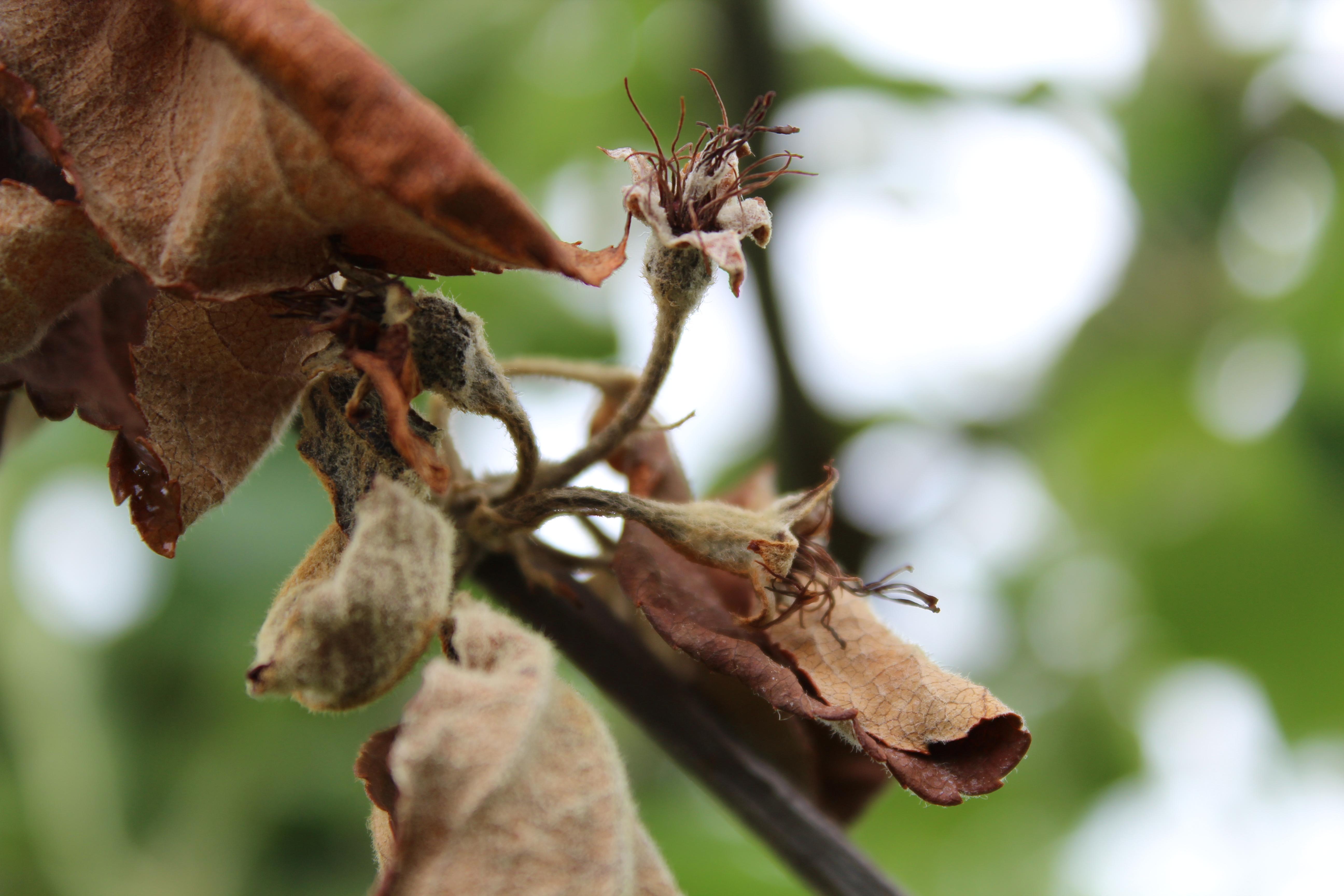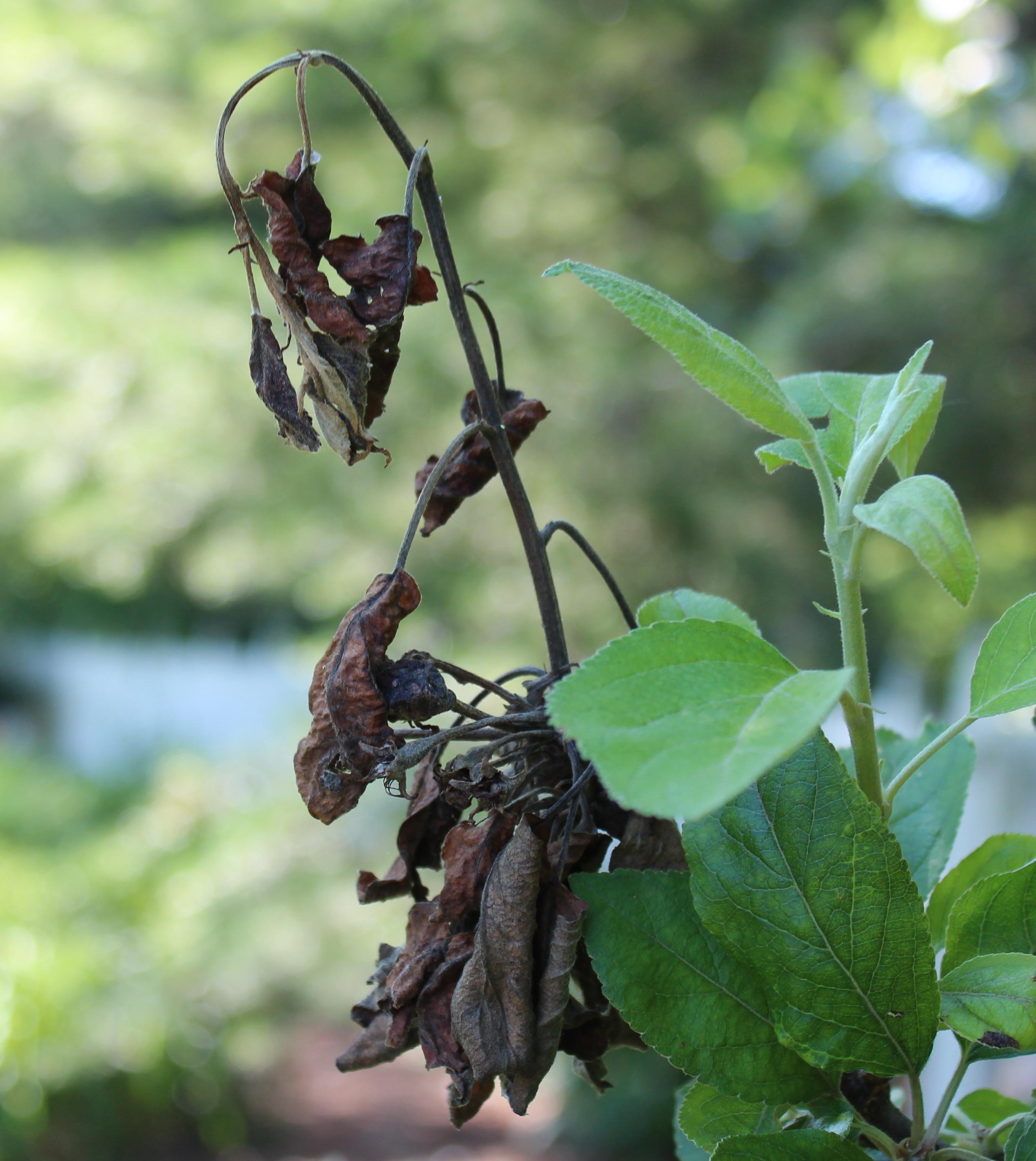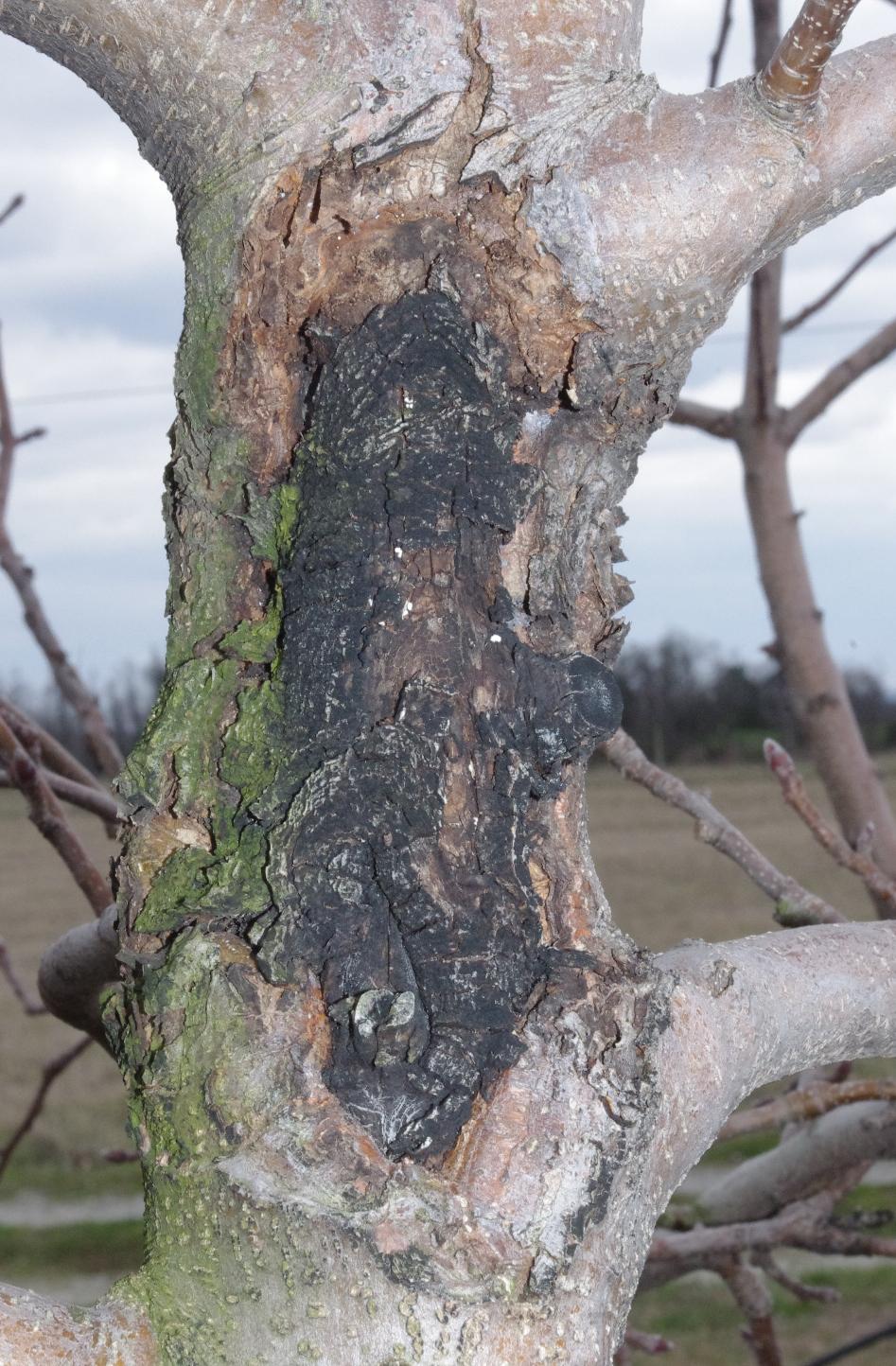Fire Blight of Apple
Return to Diseases
Fire blight (Erwinia amylovora) is a bacterial disease with three distinct phases. Blossom blight occurs during bloom, causing collapse and rapid blackening of blossoms and/or spurs. This blossom infection stage is most severe when weather is warm and wet during bloom. Shoot blight occurs several weeks after bloom, with symptoms occurring on rapidly growing shoots. Infected shoots turn black from the tip, causing the tip to bend over forming a typical shepherd’s crook at the tip of the branch. Canker phase begins at locations where spurs or infected branches intersect with larger branches. Advanced branch and trunk cankers usually contain black, sunken areas covered with loose, peeling bark.

Blossom blight stage of fire blight.
(Photo: Nicole Ward Gauthier, University of Kentucky)

Stem canker stage of fire blight.
(Photo: Nicole Ward Gauthier, University of Kentucky)

Shepherds crook symptom of fire blight.
(Photo: Nicole Ward Gauthier, University of Kentucky)

Trunk canker symptom of fire blight.
(Photo: John Strang, University of Kentucky)
Management:
- Sanitation (removal of infected limbs)
- Resistant cultivars and rootstocks
- Bactericide/antibiotic sprays during bloom
